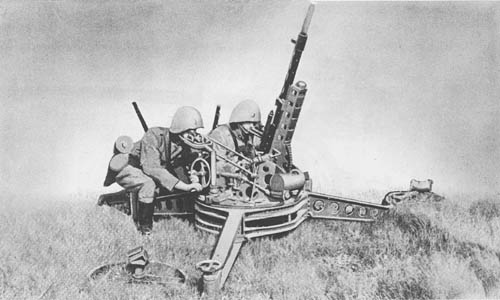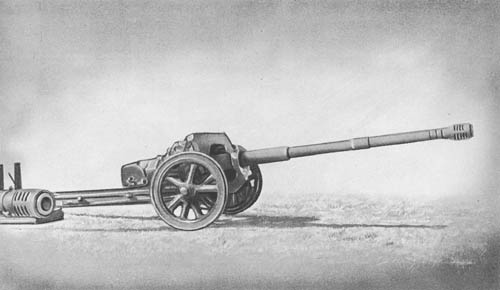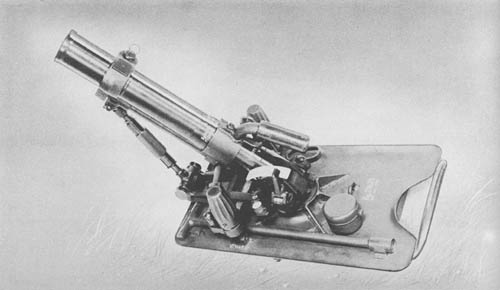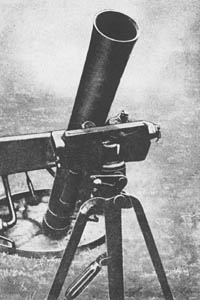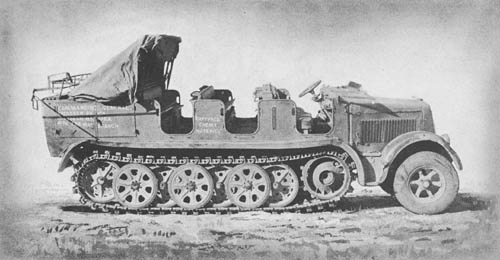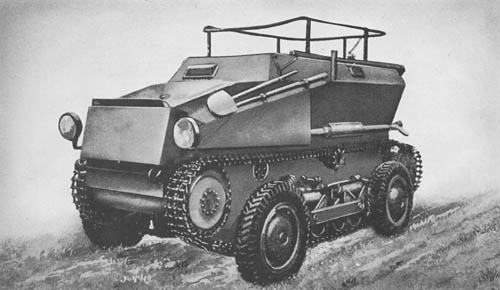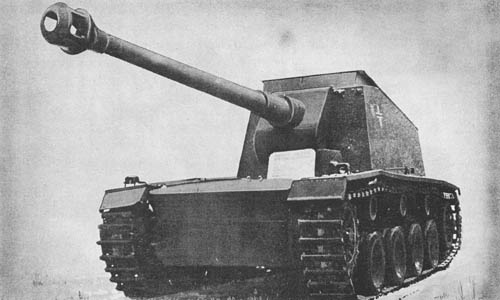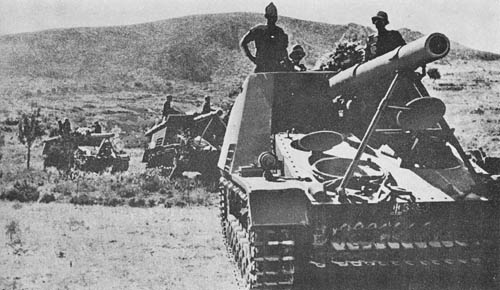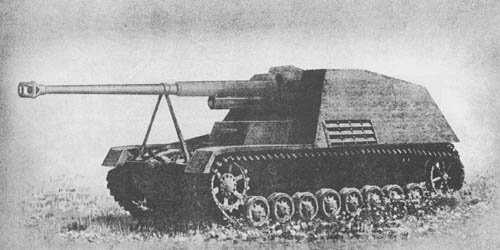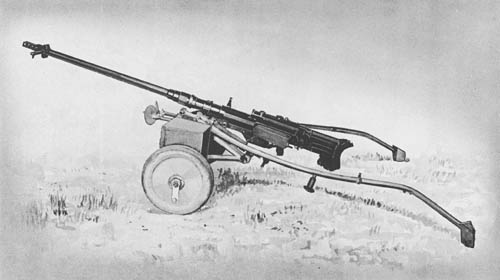
This gun, an improved version of the Solothurn 1933 model manufactured in Switzerland by the Waffenfabrik, is a magazine fed, recoil operated, semi-automatic shoulder weapon which can be fired from a bipod or a low-lying, pneumatic-wheeled carriage. The combined weight of gun and mount is approximately 200 pounds; the gun itself weighs 103 pounds.
The barrel is easily changed by giving it a half turn, thereby disengaging two lugs. Two types of magazines are used; one holding five rounds and the other ten.
The bolt is forward and all parts rigid when the firing pin strikes the cap of the projectile. When the last shot in the magazine is fired, the cartridge case is automatically ejected; then when a new magazine is inserted, the bolt is again thrown forward automatically and the gun is ready to fire.
Construction of all parts is exceptionally rugged and simple. The gun, which fires semi-automatically, is extremely accurate and easily handled. In comparison with the earlier model, the new gun shows a slight decrease in weight, increased muzzle velocity, and high armor-penetrating qualities. It also possesses the advantage of a dust-proof breech mechanism.
SPECIFICATIONS
| Caliber | 20 mm (.79 in.) | |
| Weight of gun (complete) | 103 lb. | |
| Weight of barrel with muzzle brake (approx.) | 44 lb. | |
| Length of gun (overall) | 7.1 ft. | |
| Length of barrel | 4.25 ft. | |
| Rifling | 8 lands and grooves; 5° uniform twist | |
| Muzzle velocity (reported) | 937-991 yds./sec. |
German: p. 134
